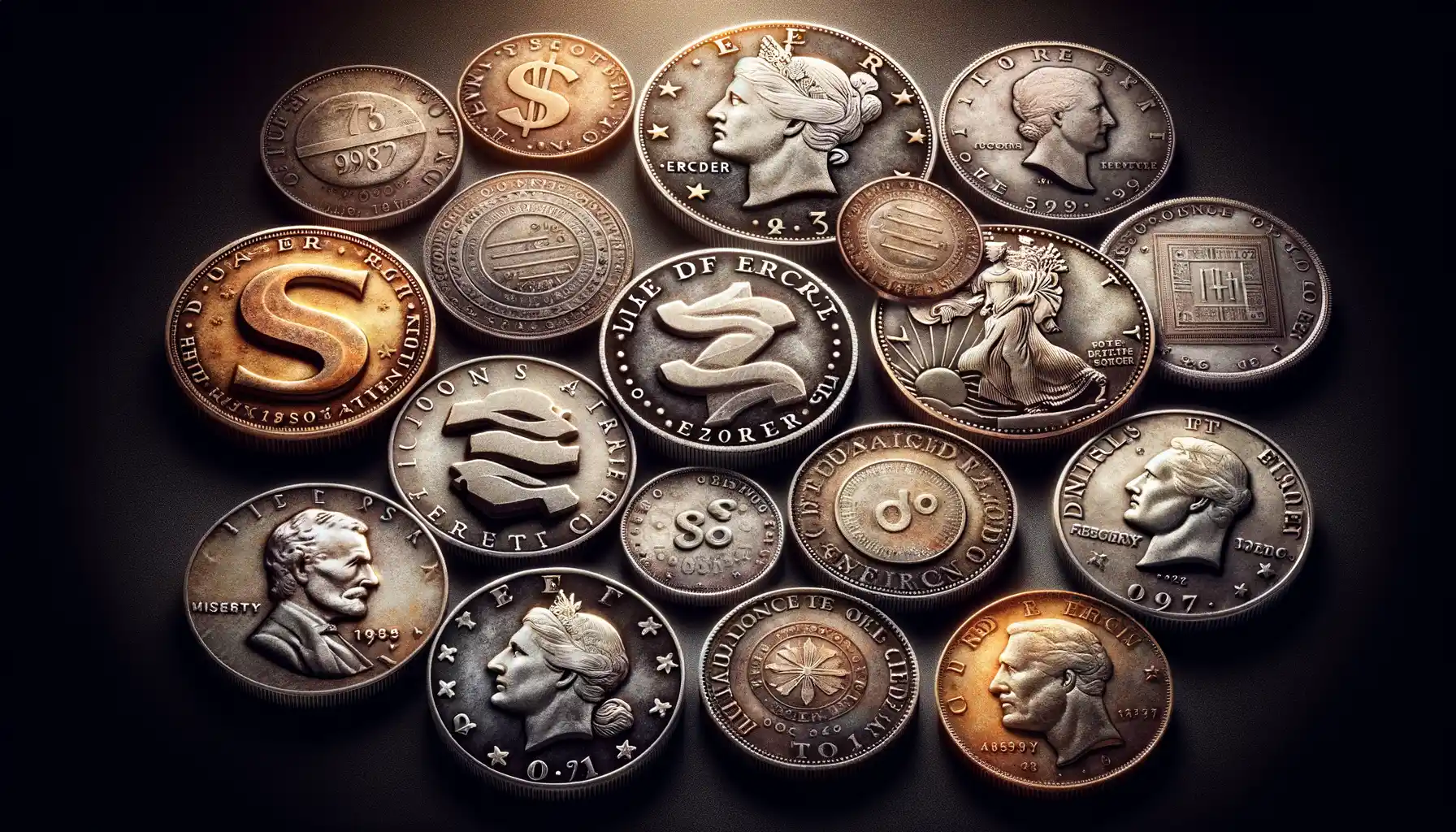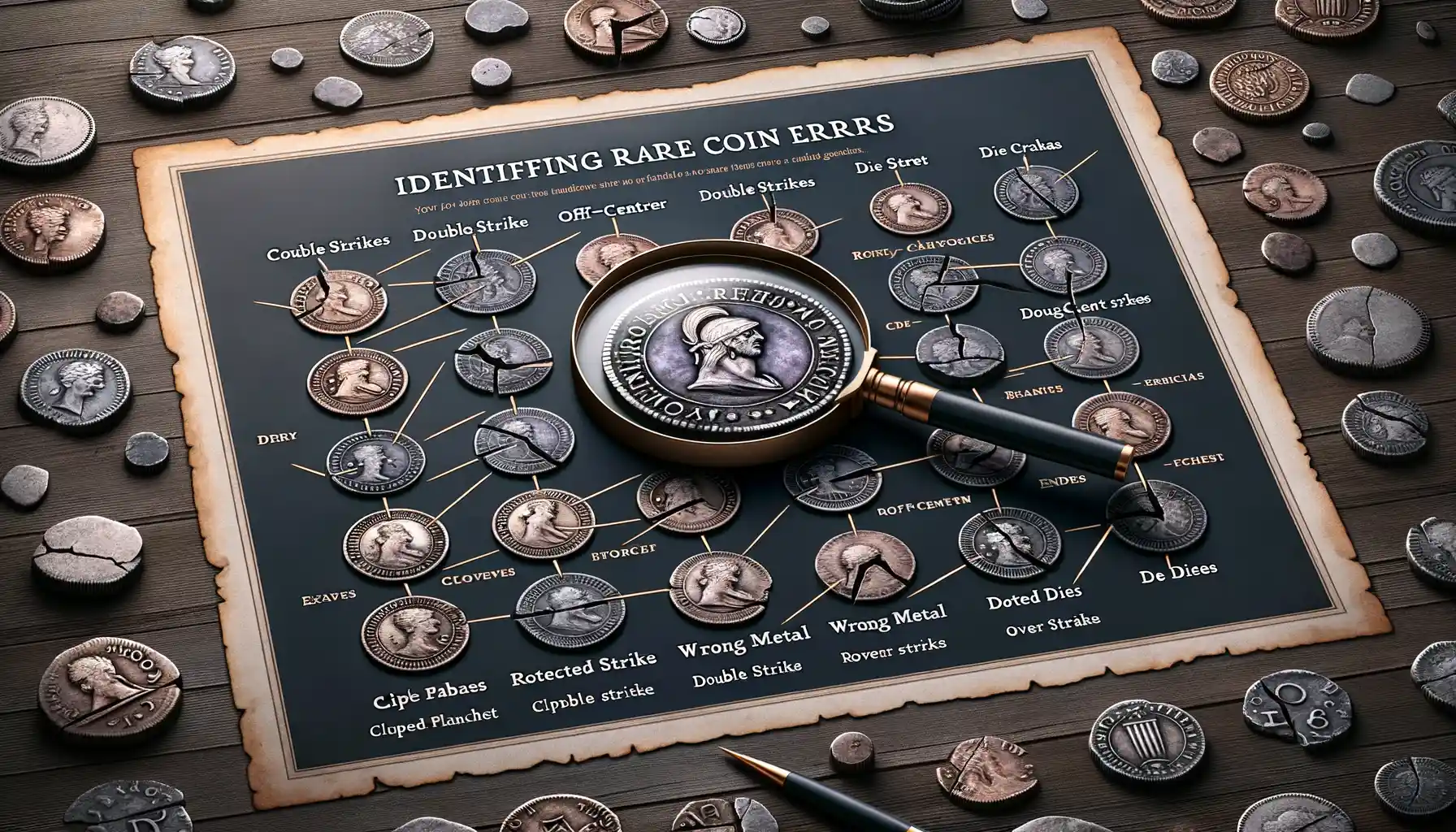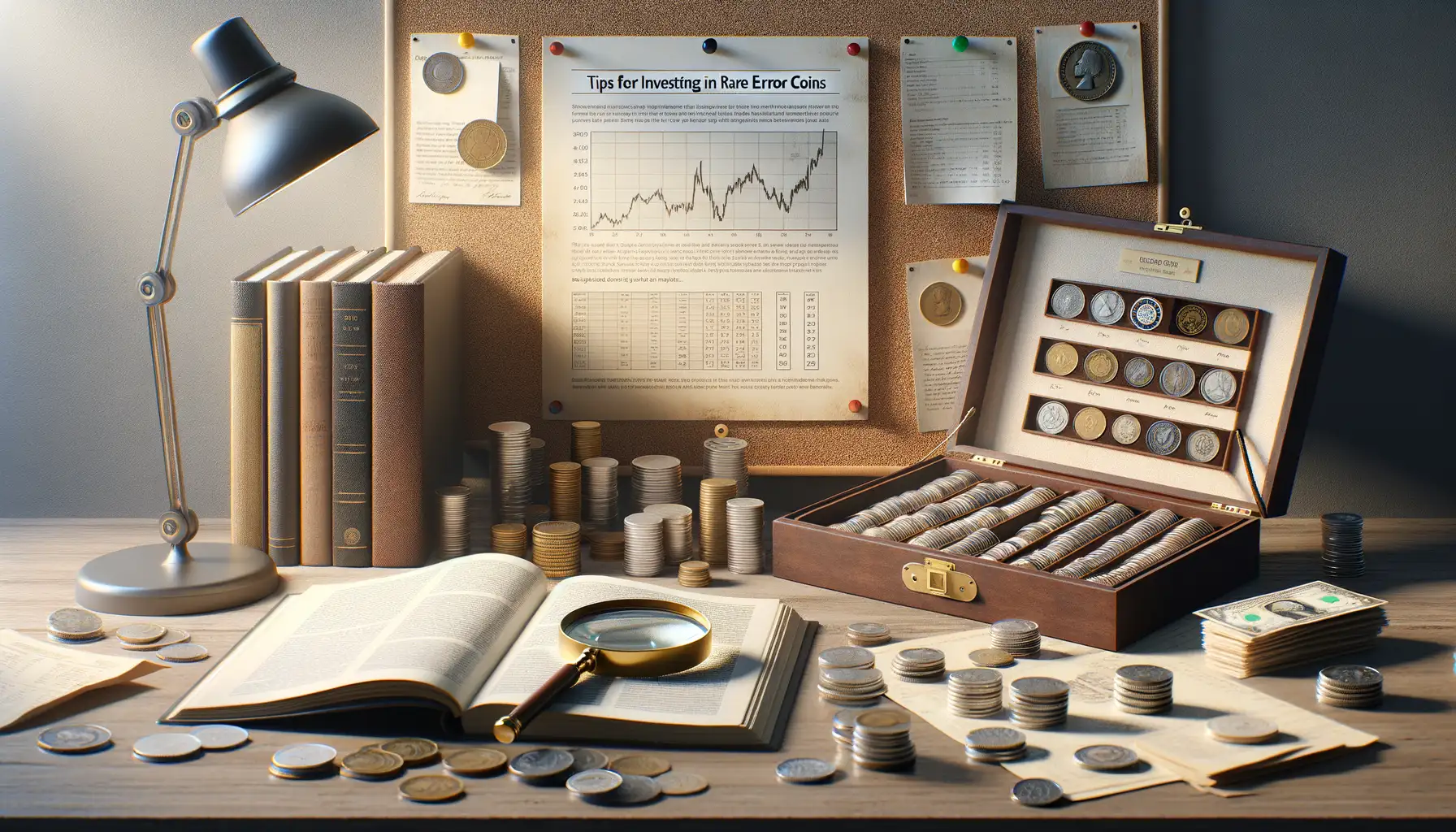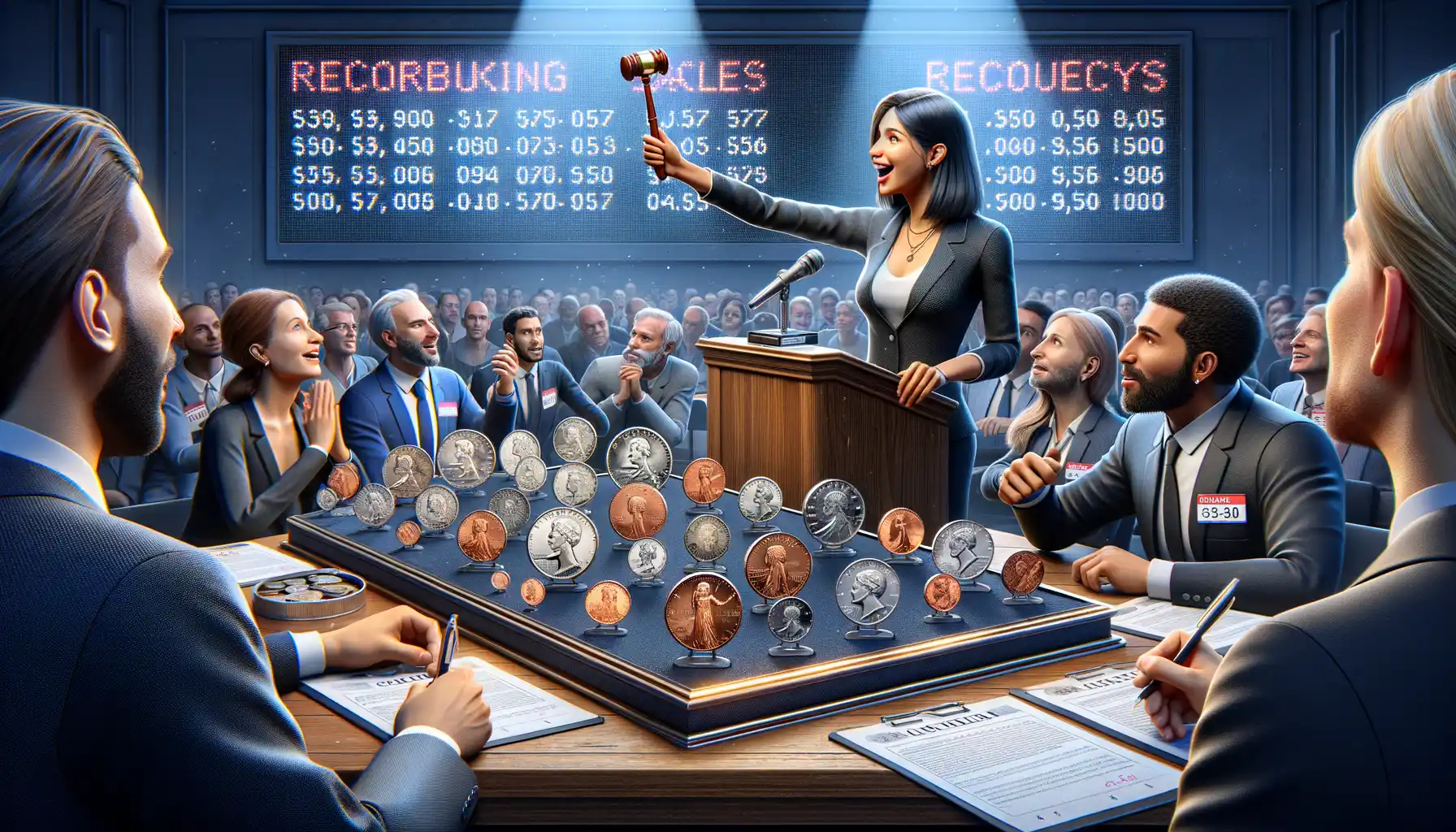Understanding Error Coins and Their Value
What Makes Error Coins Fascinating?
Imagine stumbling upon a coin in your pocket change that’s unlike any other. It may have an off-center strike, a double image, or even a missing piece of metal. These quirky imperfections are what turn mere coins into coveted treasures. In the world of numismatics, error coins aren’t just mistakes—they’re conversation starters, historical artifacts, and sometimes, jackpot-worthy finds.
Take the famed 1955 Double Die Lincoln Penny, for instance. Its doubled design wasn’t carefully planned by the U.S. Mint; it was an accident. Yet, that “oops” turned it into a six-figure sensation at auctions. Error coins are history’s unpredictable art pieces, each with its own story to tell.
Why Are Error Coins So Valuable?
Here’s the kicker: not all errors are created equal. The value of an error coin depends on factors like:
- Rarity: How many of these flawed beauties exist?
- Type of error: A missing date or inverted design can add big bucks.
- Condition: Coins in pristine condition often fetch higher prices.
Think of them as hidden treasure maps. Each imperfection has the potential to unlock a windfall, blending the thrill of discovery with the magic of history.
Most Valuable Rare Error Coins in History

The Magic of Misprints: Coins That Made History
Sometimes, perfection flaws turn out to be priceless treasures. Take the 1955 Doubled Die Lincoln Cent, for example. At first glance, it’s an ordinary penny. But look closer—its doubled inscriptions leap out like a ghostly echo, making collectors’ hearts race. One sold for over $1,800, proving just how much a “mistake” can be worth.
Then there’s the 2000 Sacagawea Dollar with the striking of a Washington Quarter reverse—a rare hybrid that never should’ve existed. Dubbed the “Mule Coin,” this mix-up sold for more than $150,000. Imagine stumbling across such a marvel in your change—it’s the stuff treasure-hunt dreams are made of!
- 1943 Copper Penny: Struck in wartime when copper was reserved for ammunition, these rarities can fetch over $1 million.
- 1937 Three-Legged Buffalo Nickel: A minting hiccup left this buffalo… limping figuratively, but skyrocketing its price tag to around $100,000.
Each of these coins tells a story of human error and cosmic chance, turning pocket change into literal fortunes. Finding one? That’s like discovering history stamped into metal.
How to Identify Rare Coin Errors

Spotting Hidden Treasures in Plain Sight
Rare coin errors can be like hidden gems—overlooked by the casual eye but priceless to the discerning collector. You don’t need a metal detector; just a sharp eye and a bit of patience can unearth your next fortune. Start by examining every detail of your coins under good lighting. Trust me, a magnifying glass or, even better, a jeweler’s loupe is your new best friend here.
What should you look for? Think of a coin as a tiny storybook where mistakes tell fascinating tales:
- Double Dies: Letters or images appearing doubled, almost like a ghostly shadow.
- Off-Center Strikes: Coins where the design is noticeably pushed to one side.
- Die Cracks: Jagged lines cutting across the surface like lightning bolts.
Imagine holding a penny with Abraham Lincoln’s profile somehow duplicated—it’s quirky, fascinating, and potentially worth thousands!
Trust Your Gut and Dig Deeper
Got a coin that seems *too weird to be right*? That gut feeling could lead you to a jackpot. Check for mint marks—those tiny letters indicating where it was struck. Sometimes, a missing or misplaced mark means big money. Also, pay attention to textures. Does the coin feel rough where it should be smooth? That’s another clue pointing to an error.
When in doubt, consult resources like the Cherrypickers’ Guide to Rare Die Varieties or head to an experienced coin dealer. Remember, your curiosity could very well turn spare change into a life-changing discovery!
Tips for Investing in Rare Error Coins

Start Small but Dream Big
Ready to dive into the fascinating world of rare error coin investing? First, let’s be clear: this isn’t just about collecting old change—it’s about uncovering hidden treasures that can change lives. Start by setting a budget. Whether it’s $50 or $5,000, sticking to an amount you’re comfortable with takes the pressure off and lets you enjoy the hunt. Even a humble “doubled die” penny could someday fund your dream vacation—or, who knows, even a house.
One golden rule: research is your best friend. Look up historical auction results, study grading scales, and follow market trends like a hawk. Many investors overlook the power of knowledge, but every seasoned collector will tell you—missing details could mean missing a fortune.
What to Keep an Eye On
Not all error coins are created equal. Some are subtle, while others scream “I’m rare!” Here’s where to focus your energy:
- Minting irregularities: Think off-center strikes, capped dies, or wrong-planchet errors.
- Condition: Coins in pristine, uncirculated states fetch much higher prices.
- Authentication: Invest in professionally graded coins from trusted agencies like PCGS or NGC.
Finally, trust your gut and ask yourself: does this coin tell a story that resonates with you? Sometimes, the heart makes a better investor than the wallet!
Famous Auctions and Record-Breaking Sales of Error Coins

The Electrifying Moments That Shook the Coin World
Imagine a room buzzing with anticipation, auction paddles raised high, and the gavel poised to strike. That’s what it feels like when legendary error coins hit the auction block. The sheer charm of these mistakes-turned-masterpieces has created some jaw-dropping moments in numismatic history.
One unforgettable example? The legendary 1955 Double Die Lincoln Cent. Known for its strikingly misaligned doubling, this penny once fetched over $100,000 at auction—a small fortune for a coin that originally cost just one cent!
And who could forget the iconic 1974 Aluminum Penny? Only a few of these experimental coins were ever made, and they created an absolute frenzy when one appeared at a public sale. Stories say it stirred whispers, wide-eyed stares, and even competing phone bids.
Bidding Wars and Million-Dollar Moments
Some records were shattered by modern rarities, while others reached back into history:
- 2000 Sacagawea Dollar “Mule” Error: A clash of coins and engravings sold for over $250,000, making collectors swoon over its sheer rarity.
- 1943 Bronze Lincoln Cent: A mistake during wartime led to this copper anomaly, which hammered down at a staggering $1.7 million.
Each auction is proof that even imperfection can command perfection-level prices. Isn’t that magical?
